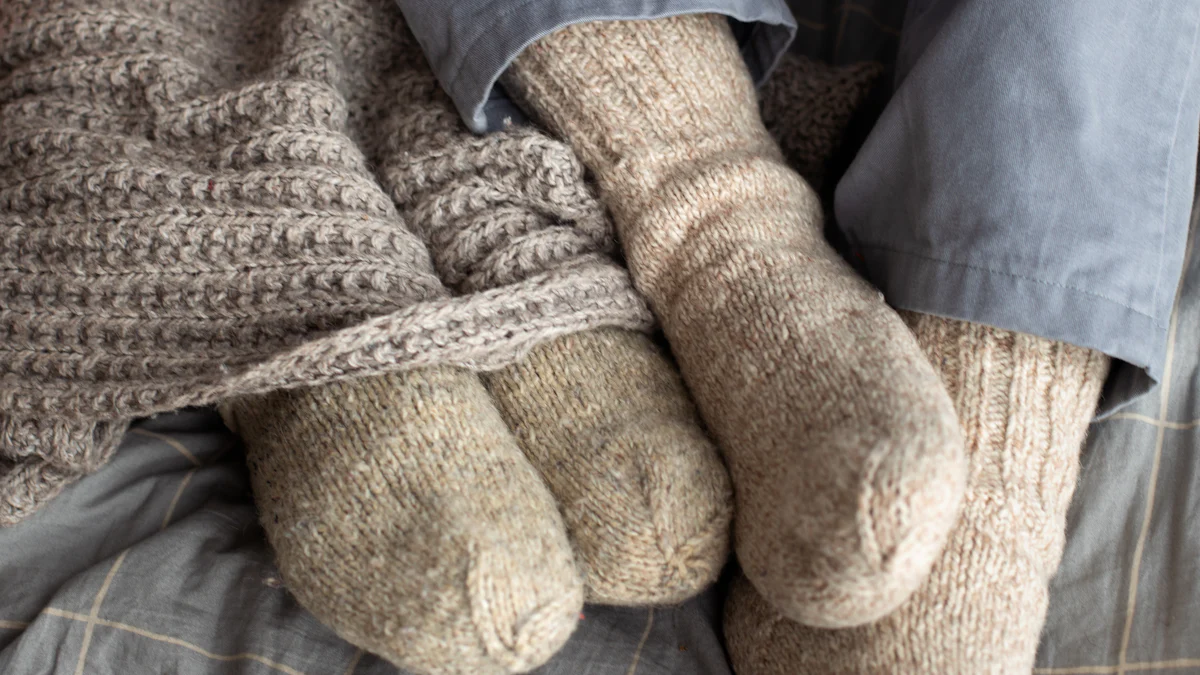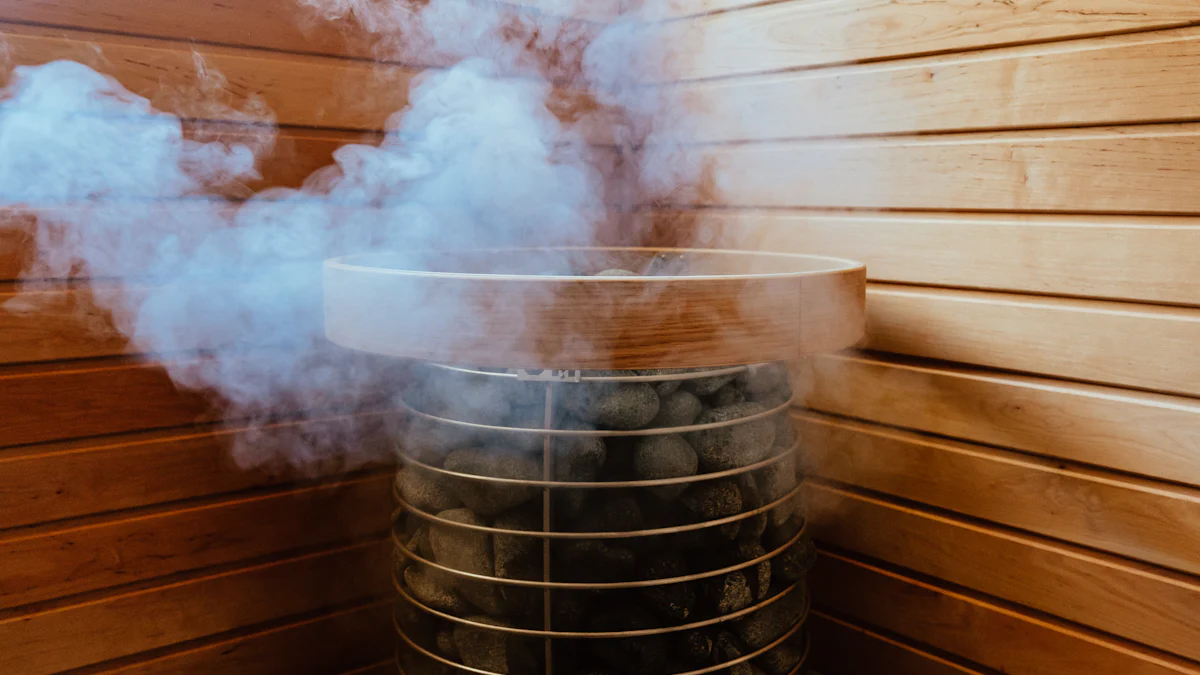
Choosing the right socks can make or break your day. Comfort starts from the feet up, and the right pair of socks plays a crucial role. Wool or cotton socks? That is the question. Each type offers unique benefits. Wool socks excel in moisture-wicking and temperature regulation. Cotton socks shine in breathability and lightweight comfort. Understanding these differences helps in making an informed choice for your feet’s happiness.
Moisture Control

Wool Socks
Moisture-Wicking Properties
Wool socks excel in moisture control. Wool fibers naturally wick moisture away from the skin. This keeps feet dry and comfortable. Merino wool, in particular, stands out for its ability to handle sweat. Wool socks can absorb up to 30% of their weight in water without feeling damp. This makes wool a top choice for activities involving heavy perspiration.
Impact on Foot Health
Dry feet mean happy feet. Wool socks help prevent blisters and fungal infections. The moisture-wicking properties reduce the risk of athlete’s foot. Wool also has natural antimicrobial properties. This helps keep feet fresh and odor-free. Wool socks provide a healthier environment for feet.
Cotton Socks
Absorbency
Cotton socks absorb moisture like a sponge. Cotton fibers soak up sweat quickly. However, cotton does not release moisture easily. Wet cotton socks can feel heavy and uncomfortable. Cotton dries faster than wool once fully soaked but tends to retain moisture longer during wear.
Impact on Foot Health
Wet feet can lead to problems. Cotton socks can cause blisters due to friction. Prolonged moisture exposure increases the risk of fungal infections. Cotton lacks the antimicrobial properties found in wool. This can result in odor buildup. Cotton socks might not be the best choice for long, sweaty activities.
Temperature Regulation

Wool Socks
Insulation in Cold Weather
Wool socks excel in cold weather. Wool fibers trap air, creating a natural insulating layer. This keeps feet warm even in freezing temperatures. Merino wool, in particular, offers exceptional warmth without bulk. Outdoor enthusiasts prefer wool socks for winter adventures. Wool socks maintain warmth even when wet, unlike cotton socks.
Breathability in Warm Weather
Wool socks also perform well in warm weather. Wool fibers allow air to circulate, preventing overheating. This breathability makes wool socks versatile for different climates. Hikers and athletes appreciate the comfort of wool socks during summer activities. Wool socks manage moisture effectively, keeping feet dry and cool.
Cotton Socks
Cooling Effect
Cotton socks provide a cooling effect in hot weather. Cotton fibers are lightweight and breathable. This makes cotton socks ideal for casual wear and warm climates. Cotton socks feel soft against the skin, offering comfort during everyday activities. However, cotton socks may not manage moisture as efficiently as wool socks.
Performance in Different Climates
Cotton socks perform best in moderate conditions. Cotton absorbs sweat quickly but dries slowly. This can lead to discomfort during intense activities. Cotton socks may retain moisture, causing feet to feel damp. Wool or cotton socks each have their strengths, but wool socks offer better temperature regulation overall.
Odor Control
Wool Socks
Natural Antimicrobial Properties
Wool socks possess natural antimicrobial properties. Merino wool, in particular, contains lanolin. Lanolin prevents the growth of odor-causing bacteria. This keeps feet fresh even after prolonged wear. Wool fibers inhibit bacterial growth, unlike cotton fibers. Wool socks stay odor-free during intense physical activity.
Long-Term Use
Wool socks excel in long-term use. The antimicrobial properties maintain freshness over time. Wool fibers resist dirt and stains. This makes wool socks ideal for repeated use. Outdoor enthusiasts prefer wool socks for extended adventures. Wool socks provide comfort and hygiene for longer periods.
Cotton Socks
Odor Retention
Cotton socks tend to retain odors. Cotton fibers absorb moisture, creating a breeding ground for bacteria. Bacteria cling to the smooth surface of cotton fibers. This leads to the buildup of odor-causing microbes. Cotton socks become smelly quickly during active use. Cotton lacks the natural defenses found in wool socks.
Maintenance Tips
Proper maintenance can help reduce odor in cotton socks. Regular washing is essential. Use hot water to kill bacteria. Avoid fabric softeners, which can trap odors. Dry cotton socks thoroughly before wearing them again. Consider rotating between multiple pairs to allow for complete drying. These tips can help manage odor retention in cotton socks.
Durability
Wool Socks
Longevity
Wool socks stand out for their impressive longevity. Merino wool socks, in particular, are known for their durability. The fibers in wool socks can withstand heavy use without losing shape. Outdoor enthusiasts often choose wool socks for their long-lasting performance. Wool socks maintain their structure even after multiple washes.
Resistance to Wear and Tear
Wool socks excel in resisting wear and tear. The natural elasticity of wool fibers allows them to stretch without breaking. This makes wool socks ideal for rigorous activities. Construction workers and hikers prefer wool socks for their resilience. Wool socks endure tough conditions better than cotton socks.
Cotton Socks
Durability Over Time
Cotton socks offer comfort but lack durability. Cotton fibers tend to break down faster with regular use. Frequent washing can cause cotton socks to lose their shape. Cotton socks may develop holes or thin spots over time. Wool or cotton socks each have benefits, but wool socks last longer.
Common Issues
Cotton socks face common issues related to durability. The fibers in cotton socks become abrasive when wet. This leads to faster wear and tear. Cotton socks may also shrink after washing. Wool socks, on the other hand, retain their size and shape. Cotton socks require more frequent replacement compared to wool socks.
Price and Value
Wool Socks
Cost Analysis
Wool socks often come with a higher price tag. The production process for wool, especially Merino wool, involves more steps and higher-quality materials. This results in a premium product. For example, Sockrates’ Eco-Luxe Wool Socks offer a unique plush feel and eco-conscious elegance. These qualities justify the higher cost. Consumers investing in wool socks pay for superior comfort and performance.
Value for Money
Despite the higher initial cost, wool socks provide excellent value for money. The durability of wool socks means fewer replacements over time. Wool’s natural properties, such as moisture-wicking and odor control, enhance foot health. Outdoor enthusiasts find wool socks a worthwhile investment. The long-term benefits outweigh the upfront expense. Wool socks deliver consistent comfort and reliability.
Cotton Socks
Cost Analysis
Cotton socks generally cost less than wool socks. The production process for cotton is simpler and cheaper. Cotton fibers come from plant sources, making them widely available. This accessibility keeps prices low. Cotton socks are an affordable option for everyday wear. The lower cost makes cotton socks a popular choice for casual use.
Value for Money
Cotton socks offer good value for money in certain contexts. The lightweight and breathable nature of cotton make these socks ideal for warm weather. Cotton socks are easy to care for and maintain. However, cotton socks may require more frequent replacements due to wear and tear. The initial savings on cotton socks can add up over time. Cotton socks serve well for short-term use but may not match the longevity of wool socks.
The comparison between wool and cotton socks reveals distinct advantages for each type. Wool socks excel in moisture-wicking, temperature regulation, and durability. Cotton socks offer lightweight comfort and breathability.

